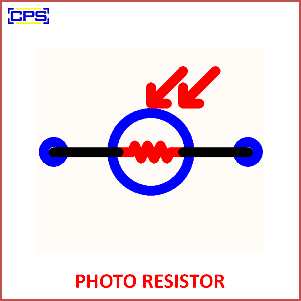A Photoresistor, also known as a Light Dependent Resistor (LDR), is a passive electronic component whose resistance decreases as the intensity of light falling on it increases. It is made of a photosensitive material, typically cadmium sulfide (CdS), which changes its electrical conductivity when exposed to light.

Key Features of a Photoresistor
- Light Sensitivity:
- The resistance varies inversely with light intensity; more light results in lower resistance, while less light results in higher resistance.
- Material:
- Commonly made from cadmium sulfide or other semiconductor materials that respond to visible or infrared light.
- Response Time:
- Reacts to changes in light, though the response time is slower than other light sensors like photodiodes.
Working Principle:
- A photoresistor operates based on the photoelectric effect, where photons of light excite electrons in the material, increasing its conductivity and decreasing resistance.
Applications of Photoresistors:
- Automatic Lighting:
- Streetlights, nightlights, and garden lights that turn on or off based on ambient light levels.
- Light Meters:
- Used in cameras and other devices to measure light intensity.
- Safety Systems:
- Incorporated in burglar alarms and motion detection systems.
- Industrial Automation:
- Used to detect light levels in processes requiring precise control.
- Consumer Electronics:
- Found in TV remotes and screen brightness controls.
Advantages:
- Simple and inexpensive.
- Easy to integrate into circuits.
- Wide sensitivity range to light.
Disadvantages:
- Slower response time compared to photodiodes or phototransistors.
- Sensitive to temperature, which can affect accuracy.
- Limited lifespan under prolonged exposure to intense light.
